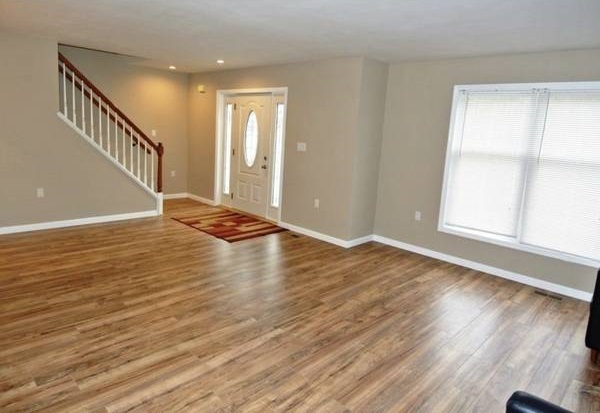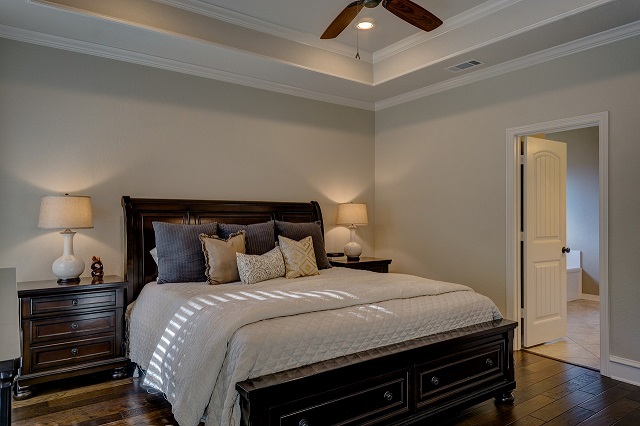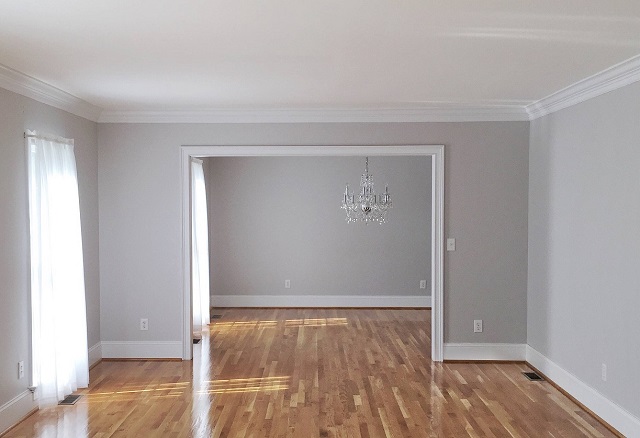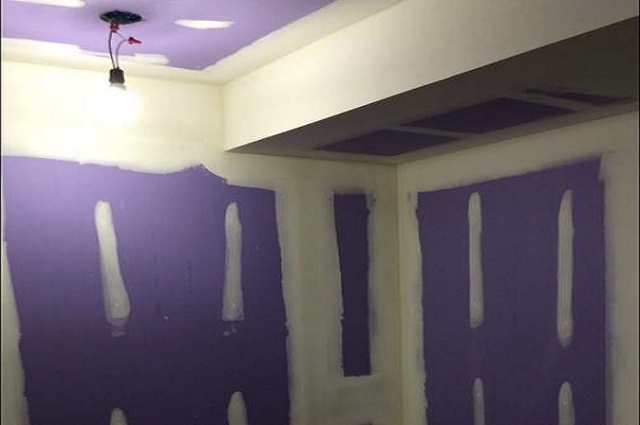Prepping the Walls for Painting
Before painting your walls with a fresh coat of paint, the first step is to make sure they are prepped and ready for the transformation. Before you break out the brushes and rollers, take some time to inspect the walls for any imperfections that might hinder the painting process. Look out for cracks, holes, or rough patches that need to be addressed before you can achieve a smooth and professional finish.
Next up, it’s time to roll up your sleeves and get to work on fixing those flaws. Grab some spackling compound and a putty knife to fill in any small holes or cracks. For larger imperfections, consider using joint compound to create a smooth surface. Once you’ve patched up all the blemishes, give the walls a gentle sanding to ensure a seamless transition between the repaired areas and the rest of the wall. Remember, a little extra effort during the prepping stage can make a world of difference in the final outcome of your painting project.
• Inspect the walls for cracks, holes, or rough patches
• Use spackling compound and putty knife for small holes and cracks
• Consider using joint compound for larger imperfections
• Give the walls a gentle sanding after patching up blemishes
Choosing the Right Paint for Textured Walls
When it comes to picking the right paint for your textured walls, there are a few things to consider to achieve the best results. Textured walls have their own unique characteristics that can impact how paint adheres and looks once applied.
First off, you’ll want to opt for a paint that has a thicker consistency to effectively cover the textured surface. This will help ensure that the paint reaches into all the nooks and crannies of the texture, providing an even coat. Additionally, choosing a quality paint with good durability is essential to prevent the need for frequent touch-ups. Remember, your painter’s choice of paint can make all the difference in the final outcome of your textured walls.
Tools and Materials Needed for Painting Textured Walls
So, you’ve decided it’s time to jazz up those textured walls with a fresh coat of paint. Before you dive in with your creative juices flowing, let’s make sure you have all the essential tools and materials you need for this house painting project.
First things first, you’ll need a good quality paint roller with a thick nap to ensure you can effectively cover the textured surface. A sturdy paint tray and disposable liners will come in handy for easy cleanup between paint colors. Don’t forget your trusty angled brush for those hard-to-reach corners and edges. And of course, plenty of painter’s tape to protect your trim and keep those lines sharp. Grab a drop cloth to protect your floors and furniture from any accidental splatters – because let’s face it, a little mess is all part of the fun when it comes to house painting!
How to Fill in and Repair Damaged Textured Walls
So, you’ve got some dings and dents in your textured walls that need some TLC from a house painter, huh? No worries, it happens to the best of us! To tackle those imperfections, start by gently sanding down the damaged areas to smooth out any rough edges and create a clean surface for the repair.
Next up, grab some premixed joint compound and a putty knife – these are your best friends when it comes to filling in those pesky holes and cracks. Apply the joint compound to the damaged areas, making sure to feather out the edges for a seamless blend with the surrounding texture. Let it dry completely, then give it a light sanding to ensure a smooth finish. And voila, your textured walls are on their way to looking as good as new!
Tips for Applying Primer on Textured Walls
Priming your textured walls before painting is crucial for achieving a smooth and long-lasting finish. When it comes to residential painting projects, applying primer properly can make all the difference. Make sure to choose a high-quality primer specifically designed for textured walls to ensure optimal adhesion and coverage.
Before applying primer, it’s essential to thoroughly clean the walls to remove any dirt, dust, or grease that could prevent the primer from adhering properly. Use a damp cloth or sponge to wipe down the walls and allow them to dry completely before starting the priming process. Remember, a little extra time spent on prep work can save you from potential headaches down the road when it comes to painting your textured walls.
Techniques for Painting Textured Walls
So, you’ve got those textured walls ready for a fresh coat of paint, huh? Well, when it comes to tackling those unique surfaces, it’s all about using the right techniques. Let me let you in on a little secret – commercial painters have some tricks up their sleeves that can really make a difference. One technique they swear by is using a roller with a thicker nap to help paint get into all those nooks and crannies of your textured walls. This ensures a more even coverage and saves you from the hassle of going over the same spot multiple times.
Another technique that commercial painters often use is called “cross-hatching.” No, it’s not some fancy art lingo – it’s simply a method of painting in a crisscross pattern to ensure that the paint is evenly distributed across the entire surface. This technique is especially handy when dealing with textured walls as it helps to avoid streaks and blotchy areas. So, grab your roller and get ready to unleash your inner commercial painter on those textured walls – you’ll be amazed at the difference these simple techniques can make!
How Many Coats of Paint Do Textured Walls Need?

When it comes to painting textured walls, the number of coats needed can vary depending on the type of texture and the color of the paint you are using. In general, textured walls typically require at least two coats of paint to achieve full coverage and a uniform finish. However, if you are painting a textured wall with a dark or bold color, you may need to apply an additional coat to ensure that the color is rich and vibrant.
The key to determining how many coats of paint your textured walls need is to start with a primer. A good quality primer can help to seal the surface of the texture and create a smooth base for the paint to adhere to. If the primer provides good coverage and the paint color you have chosen is similar to the primer, you may find that two coats of paint are sufficient. However, if you are painting over a dark color or a highly textured surface, you may need to apply three or even four coats for the best results. By taking the time to properly prepare and paint your textured walls, you can achieve a beautiful and long-lasting finish that will enhance your space.
Dealing with Drips and Mistakes While Painting Textured Walls
Oh no, you’ve got some paint drips and mistakes on your textured walls – not the end of the world! Sometimes those drips happen when we’re in the painting zone, am I right? The first thing to remember is to stay calm and not panic. Grab a damp cloth and gently dab at the drips while they’re still wet. Don’t scrub too hard, though – you don’t want to smear the paint even more.
If the drips have already dried, no worries, we can still fix it up. Grab a razor blade and gently scrape away the excess dried paint. Be careful not to scratch the texture of the wall. Once you’ve removed as much paint as you can, grab a touch-up brush and some matching paint. Feather the paint over the drips in thin layers, blending it with the surrounding texture. Stand back, take a breather, and admire your handiwork. Crisis averted!
Adding a Pop of Color to Textured Walls
When it comes to adding a vibrant touch to your textured walls, choosing the right color can make all the difference. Bold hues like emerald green or deep navy blue can instantly liven up a room, while softer pastel shades like blush pink or sky blue can create a calming atmosphere. Don’t be afraid to mix and match colors to create a unique look that reflects your personality and style. Remember, the key is to have fun and experiment with different color combinations until you find the perfect pop of color that brings your textured walls to life.
If you’re feeling adventurous, consider adding a statement wall with a bold, contrasting color to create a focal point in the room. This can be achieved by painting one wall in a deep, rich color while keeping the other walls neutral or in a lighter shade. Another fun way to incorporate color is by using stencils or decals to create geometric patterns or designs in a complementary color. Just let your creativity flow and don’t be afraid to take risks – after all, it’s just paint and can always be changed if you’re not totally in love with the result.
How to Achieve a Smooth Finish on Textured Walls
Achieving a smooth finish on textured walls can seem like a daunting task, but with the right techniques and a bit of patience, it’s totally doable. One key strategy is to apply a thin coat of joint compound over the textured surface using a trowel or putty knife. This will help fill in the crevices and create a more even base for painting. Don’t worry if it looks a bit rough at first – the next step is where the magic happens!
After the joint compound has dried completely, sand the surface with fine-grit sandpaper to smooth out any rough spots and imperfections. This step may require some elbow grease, but trust me, it’s worth it for that silky smooth finish. Once you’re satisfied with the smoothness of the surface, you can proceed to priming and painting your textured walls for a flawless final look.
Protecting and Sealing Painted Textured Walls
So, you’ve put all that effort into painting your textured walls and you want them to stay looking fabulous for as long as possible, right? Well, protecting and sealing painted textured walls is the key to ensuring your hard work doesn’t go to waste. Once your walls are painted and thoroughly dried, it’s time to seal them up with a clear coat to protect them from everyday wear and tear. The sealant acts as a shield, preventing dirt, grime, and stains from penetrating the texture of your walls and making them difficult to clean.
When selecting a sealant for your painted textured walls, opt for a clear, water-based product that won’t alter the color of your paint. Make sure to apply the sealant evenly and allow it to dry completely before touching or cleaning the walls. This extra step in the painting process will not only safeguard your walls from damage but also make them easier to maintain in the long run. By sealing your painted textured walls, you’re essentially giving them a protective armor that will keep them looking fresh and vibrant for years to come.
Cleaning Up After Painting Textured Walls
Once your textured walls have received a fresh coat of paint, it’s time to tidy up the aftermath of your creative endeavor. Grab a damp cloth and gently wipe away any stray paint splatters or drips that may have found their way onto your floors or surfaces during the painting process. Don’t forget to gather up all your painting tools and materials and give them a good rinse or wipe-down to ensure they’re ready for your next home improvement project.
When it comes to keeping your space clean after painting textured walls, remember that a little attention to detail goes a long way. Take a moment to inspect the room for any overlooked paint spots or smudges that may detract from the fresh look of your walls. A quick touch-up with a small brush or sponge can easily remedy these imperfections, leaving your textured walls looking flawless and ready to showcase your personal style.
How Long Does It Take for Painted Textured Walls to Dry?
After meticulously painting your textured walls with care and precision, you’re probably eager to know how long it will take for them to dry fully. Well, grab a snack and settle in, because the drying time can be a bit of a waiting game. Factors such as the texture depth, humidity levels, and ventilation in the room all play a role in determining how quickly your freshly painted walls will dry.
Usually, painted textured walls can take anywhere from 24 to 48 hours to dry completely. However, it’s essential to keep in mind that thicker textures or multiple coats of paint may require additional drying time. To speed up the drying process, ensure proper air circulation in the room by opening windows or using fans. Remember, patience is key when it comes to letting your walls dry to perfection!
Maintaining and Touching Up Painted Textured Walls
If you’ve invested time and effort into painting your textured walls, you’ll want to ensure they stay looking fresh and vibrant for as long as possible. One simple way to maintain the beauty of your painted textured walls is by regularly dusting them with a soft cloth or duster. Dust can accumulate over time, especially in the textured crevices, so a quick dusting every now and then can help keep your walls looking clean and well-maintained.
When it comes to touching up painted textured walls, it’s essential to have the right tools on hand. Keep some of the leftover paint in an airtight container for future touch-ups. A small brush or sponge can be handy for carefully dabbing paint onto any scuffs or scratches that may appear over time. Take your time and blend the touch-up paint with the existing finish to ensure a seamless repair that won’t stand out. By staying proactive with maintenance and touch-ups, you can keep your painted textured walls looking like new for years to come.
Creative Ideas for Textured Wall Finishes
Sometimes, adding a touch of whimsy to your textured walls can elevate the entire room. Consider incorporating metallic paints like gold or silver to create a luxurious shimmering effect. Another fun idea is to use stencils to add intricate patterns or nature-inspired designs to your textured walls. This can bring a sense of depth and personality to the space while allowing you to express your creativity in a unique way.
If you’re feeling bold, why not experiment with color blocking on your textured walls? By painting different sections of the wall in contrasting colors, you can create a dynamic and eye-catching look that will surely make a statement. For a more subtle approach, try using a sponge or ragging technique to layer paint colors for a soft and dimensional finish. Embrace the texture of your walls and let your imagination run wild with these creative ideas for textured wall finishes.


